By Lt. Col. Harold E. Raugh, Jr., Ph.D., U.S. Army (Ret.)
Author E.B. Sledge chronicled his World War II Marine infantry combat experiences in compelling and emotional detail in the acclaimed With the Old Breed: Peleliu and Okinawa. The heartless meat grinder of war in the Pacific was “overwhelming, horrifying, degrading, [yet] fascinating” for Sledge. Miraculously, he was physically uninjured but received, as he called it, “the emotionalequivalent of a sliver of steel shrapnel lodged near my heart.”
After the Japanese surrender in 1945, Sledge and his comrades in the 1st Marine Division (“the Old Breed”) were redeployed to North China to assist in disarming the defeated Japanese and keep a tenuous peace in the war-ravaged region. Sledge’s regiment was headquartered in Peiping (Beijing). This was an important railroad junction as well as the intellectual and cultural center of China. Sledge’s immersion into exotic civilian culture there began his emotional healing, as described in China Marine: An Infantryman’s Life after World War II (Oxford University Press, New York, 2003, 167 pp., illustrations, map, index, $14.95 softcover).
Occupation duty in China was much less demanding than combat in the Pacific. In Peiping, Sledge enjoyed sleeping with a roof over his head and a wooden floor under his feet, and having plenty of food and leisure time. He explored Peiping by foot and rickshaw, visiting historical sites and savoring the fare of local restaurants. Sledge saw “jugglers, tinsmiths, chinaware repairmen, pedicurists, peddlers, and various other individuals who combined to make Peiping’s street scenes the most fascinating one can imagine.” His experience, which included guard duty and crowd control, was made the more pleasurable by learning some Chinese from his houseboy and meeting a Belgian priest and an English-speaking Chinese family.
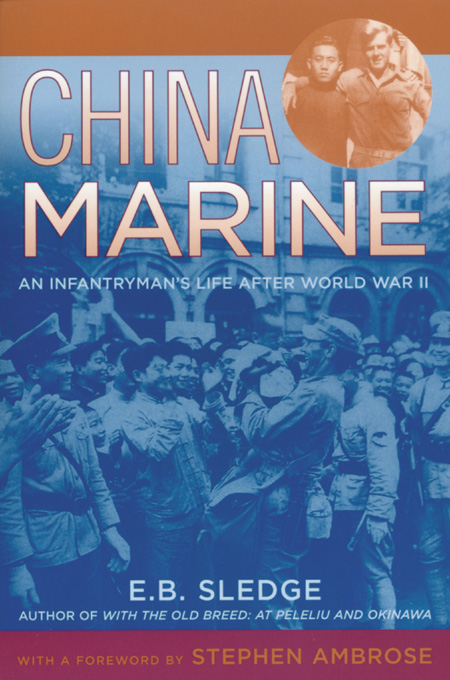 Sledge returned to the United States and was demobilized in February 1946, a fugitive “from chance’s strange arithmetic.” But the young college student who enlisted in the Marines in 1944 was not the same Sledge as the grizzled combat veteran who returned to Alabama two years later. He was a changed man who had difficulties transitioning back into the civilian world, resentful of the “Stateside commandoes” who had never heard a shot fired in anger. After a few years, Sledge realized he was a “born biologist” and earned his Ph.D. in zoology. He died in 2001, having devoted his life to teaching biology at an Alabama college, thankful for having been spared in the crucible of combat.
Sledge returned to the United States and was demobilized in February 1946, a fugitive “from chance’s strange arithmetic.” But the young college student who enlisted in the Marines in 1944 was not the same Sledge as the grizzled combat veteran who returned to Alabama two years later. He was a changed man who had difficulties transitioning back into the civilian world, resentful of the “Stateside commandoes” who had never heard a shot fired in anger. After a few years, Sledge realized he was a “born biologist” and earned his Ph.D. in zoology. He died in 2001, having devoted his life to teaching biology at an Alabama college, thankful for having been spared in the crucible of combat.
The epilogue of this book is called “I Am Not the Man I Would Have Been.” This section, in which Sledge reveals being haunted by nightmares and other symptoms of postcombat stress for decades, is the most thought-provoking and poignant of the volume. A prewar hunter, Sledge could no longer kill an animal, and he began to cherish nature even more. He attributes his ability to overcome his wartime demons to intense concentration on scientific subjects and listening to intricate classical music.
Sledge well understood that, “World War II gave me a convenient measuring stick for duty, courage, terror, friendship, patience, horror, endurance, compassion, discomfort, grief, and pain that has remained with me daily.” His outstanding memoir helps the reader understand his trials and tribulations, the soul-searing experience of intense combat, and the humility and thankfulness of having been “plucked from the mire of death by the Almighty.”
Recent and Recommended
Patton’s Vanguard: The United States Army Fourth Armored Division, by Don M. Fox, McFarland, Jefferson, NC, 2004, 496 pp., illustrations, maps, appendices, bibliography, index, $55.00 hardcover.
“They have us surrounded again, the poor bastards,” exclaimed a stalwart 4th Armored Division soldier fighting the Germans in World War II. This sentiment characterized the 4th Armored Division and its soldiers in combat, frequently as the vanguard of Patton’s Third Army.
Author Don M. Fox describes in a lively detailed manner the World War II history of the 4th Armored Division. Beginning with the division’s activation at Pine Camp, NY, in April 1941, through unit training, deployment to England, and commitment to combat in Normandy in July 1944, the author provides details of the unit’s activities, operations, equipment, and personnel. He compellingly describes the battles and engagements of the 4th Armored Division, from its breakout at Normandy, dash across France, and slogging match in the mud of Lorraine through the Battle of the Bulge. A cavalcade of colorful characters, including Lt. Gen. George S. Patton, Jr., Maj. Gen. John S. Wood, Brig. Gen. Bruce Clarke, and Lt. Col. Creighton Abrams, also marches across the pages of this volume.
Fox is not reluctant to tackle controversial issues. In the case of the December 1944 relief of division commander Wood, however, Fox’s account seems too partisan and could have been more complete if he would have used other readily available sources.
Out of the U.S. Army’s 89 combat divisions in World War II, the 4th Armored Division was one of only two divisions to be awarded Pensacola Bay began shortly after Ponce de Leon discovered La Florida in 1513. The large and protected harbor on the Gulf of Mexico gained strategic importance and was fought over many times in wars of imperial expansion and colonial conflict. After the United States acquired Florida in 1821, a Navy Yard was established; it served as the nucleus of the present Naval Air Station Pensacola. This superb pictorial history transports the reader back in time and depicts the evolution of the fortifications, batteries, buildings, and personalities of Pensacola over the last five centuries. With about 200 interesting black-and-white photographs and maps, each with a detailed caption, this excellent volume will make a welcome addition to the bookshelf of military history, coastal defense, and fortification enthusiasts.
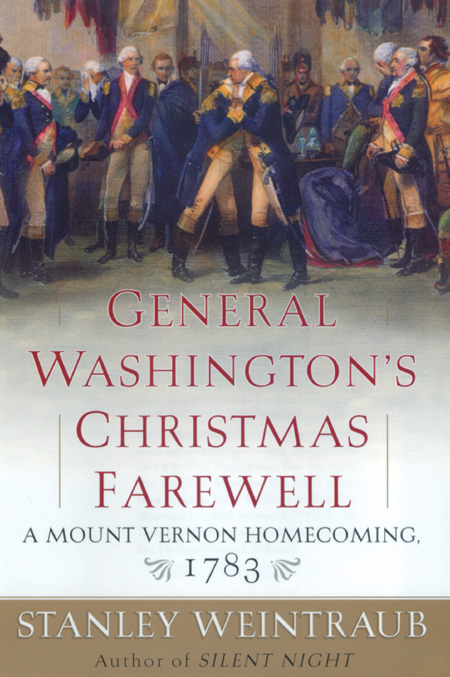 General Washington’s Christmas Farewell: A Mount Vernon Homecoming, 1783, by Stanley Weintraub, Free Press, New York, 2003, 205 pp., sources, index, $25.00 hardcover.
General Washington’s Christmas Farewell: A Mount Vernon Homecoming, 1783, by Stanley Weintraub, Free Press, New York, 2003, 205 pp., sources, index, $25.00 hardcover.
George Washington remains a revered American figure, a symbol of integrity, perseverance, and unity. During the uncertain months of 1783, after the fighting was over but before a peace treaty had officially ended the American War of Independence, Washington’s force of personality and reputation largely prevented the nascent United States from disintegrating. Washington could have seized dictatorial or sovereign power, but preferred to magnanimously withdraw from public life and retire. This selfless act drew tremendous praise, even in London, where it was said that Washington had descended “to posterity as the greatest man of the age in which he [has] lived.” In late November 1783, his mission accomplished, Washington traveled the 300 miles south from West Point, NY, to his home at Mount Vernon by Christmas.
With Washington’s role and arduous journey home as its focal point, this book includes fascinating contextual material, including the financing of the Revolution, the personalities of the various leaders, the British withdrawal from New York, and Hessian soldiers. It is a wonderful and elegantly written book, making it a pleasure and a privilege for the reader to accompany Washington on his—temporary—1783 withdrawal from fame to return to the plow at Mount Vernon. “trenchant chronicle of military mismanagement,” also reveals the development of a young officer and an evolving army at war in the mid-19th century.
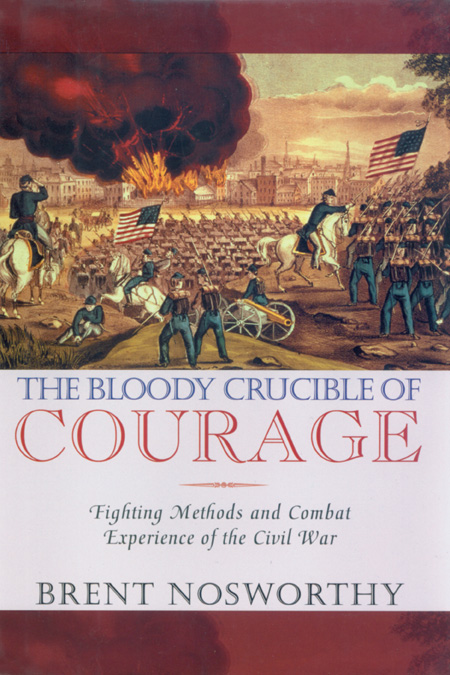 The Bloody Crucible of Courage: Fighting Methods and Combat Experience of the Civil War, by Brent Nosworthy, Carroll & Graf, New York, 2003, 753 pp., illustrations, maps, endnotes, bibliography, index, $35.00 hardcover.
The Bloody Crucible of Courage: Fighting Methods and Combat Experience of the Civil War, by Brent Nosworthy, Carroll & Graf, New York, 2003, 753 pp., illustrations, maps, endnotes, bibliography, index, $35.00 hardcover.
Military historian Brent Nosworthy has written two earlier books, one on the evolution of linear tactics after the introduction of the flintlock musket and the socket bayonet, and one on battle tactics during the Napoleonic Wars. In his new massive and well-illustrated book, Nosworthy focuses on fighting methods during the American Civil War. He discusses the vast differences in unit training methods, tactics, and doctrine, not only between the Union and the Confederate armies, but also among individual units within those armies. Moreover, the application of tactics varied according to terrain and other conditions, as well as among the infantry, cavalry, and artillery. And tactics evolved throughout the conflict. A key factor was the employment of increasingly effective weapons, which shifted the tactical advantage from the attacker to the defender. In his thoroughly researched and convincingly written study, Nosworthy identifies and describes these issues and establishes a linkage with the average Civil War soldier’s experience of combat. Overall, this seminal work merits a large audience.
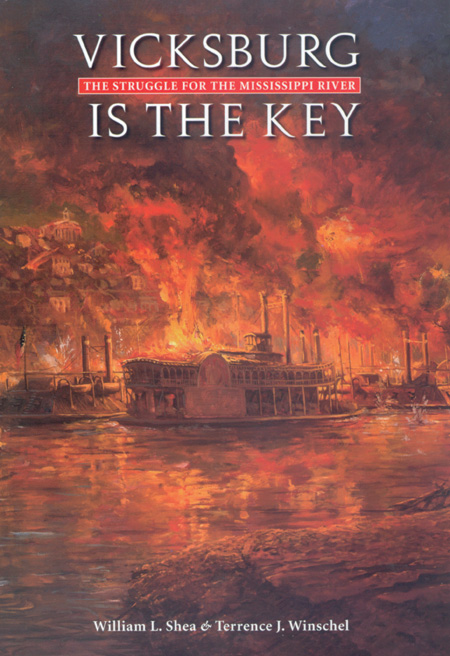 Vicksburg Is the Key: The Struggle for the Mississippi, by William L. Shea and Terrence J. Winschel, University of Nebraska Press, Lincoln, 2003, 240 pp., illustrations, maps, notes, bibliographical essay, index, $35.00 hardcover.
Vicksburg Is the Key: The Struggle for the Mississippi, by William L. Shea and Terrence J. Winschel, University of Nebraska Press, Lincoln, 2003, 240 pp., illustrations, maps, notes, bibliographical essay, index, $35.00 hardcover.
The Vicksburg campaign of 1862-1863 was one of the most, if not the most, significant operations of the Civil War. Its importance and impact have, however, been overshadowed by the near-simultaneous Union victory at Gettysburg. Civil War historians William L. Shea and Terrence J. Winschel have synthesized the most recent scholarship and produced a superb, highly readable account of the extraordinarily diverse and complicated Vicksburg campaign. The operation was designed to restore Union navigation on the crucial Mississippi River, regain access to resource-rich Western states, and cut the Confederacy in half. It included “naval engagements, cavalry raids, amphibious landings, pitched battles, and the two longest sieges in American history.” Many Union officers, including Grant, Sherman, Farragut, and Porter, honed their skills in this titanic struggle that enabled them to later reach the highest levels of command. This well-written book highlights the military planning and execution–within their strategic, political, and economic contexts—of the Union operations to seize, and Confederate efforts to defend, the “Gibraltar of the Mississippi.”
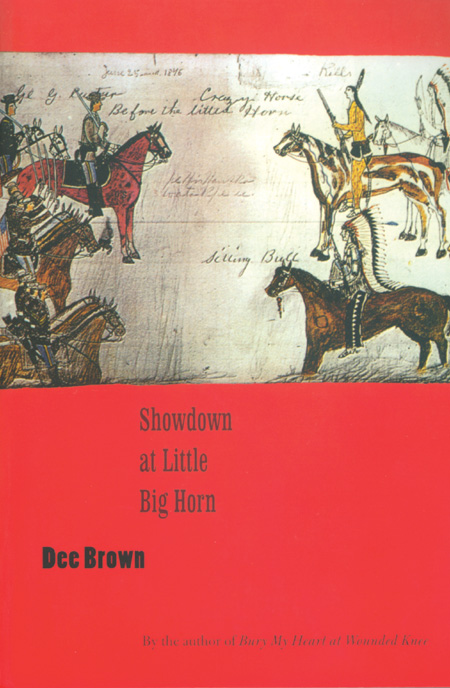 Showdown at Little Big Horn, by Dee Brown, 1964 (reprint), University of Nebraska Press, Lincoln, 2004, 220 pp., illustrations, $13.95 softcover.
Showdown at Little Big Horn, by Dee Brown, 1964 (reprint), University of Nebraska Press, Lincoln, 2004, 220 pp., illustrations, $13.95 softcover.
The fierce June 25, 1876, Battle of the Little Big Horn, at which Lt. Col. George A. Custer and over 240 of his 7th Cavalry troopers were killed by Indians, continues to fascinate and mystify historians and enthusiasts. Dee Brown, author of Bury My Heart at Wounded Knee and other acclaimed books, traces in this study the activities of that fateful day and the important events leading up to and after it. He has cobbled together the accounts—ostensibly based on reports, letters, and diaries—of 17 participants on both sides of the battle. These people include Custer, Surgeon James DeWolf, Trumpeter John Martin, Major Marcus Reno, Sitting Bull, Foolish Bear, and Crazy Horse. The accounts are narratives and contain considerable dialogue, added by the author admittedly for “dramatic effect.” But according to Brown, “the words used are those recorded by witnesses or participants.” The book contains a fast-paced chronicle of this legendary American frontier battle, although the absence of any references and the inclusion of the “dramatic” dialogue may make the reader question if this is accurate history or just good storytelling.
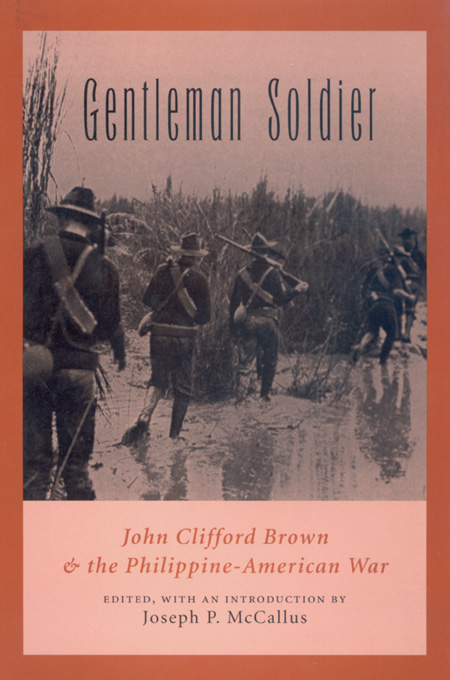 Gentleman Soldier: John Clifford Brown & the Philippine-American War, edited by Joseph P. McCallus, Texas A&M University Press, College Station, 2004, 301 pp., illustrations, maps, appendices, endnotes, bibliography, index, $39.95 hardcover.
Gentleman Soldier: John Clifford Brown & the Philippine-American War, edited by Joseph P. McCallus, Texas A&M University Press, College Station, 2004, 301 pp., illustrations, maps, appendices, endnotes, bibliography, index, $39.95 hardcover.
John Clifford Brown was born into a wealthy Maine family in 1872 and graduated from college before joining a volunteer regiment on the outbreak of the Spanish-American War in 1898. Although Brown did not serve overseas, he became a captain, and the experience seemed to whet his appetite for military service, travel, and adventure. In 1899, he enlisted in the Regular Army as a private and was sent to the Philippines. As a mature, educated, and experienced “gentleman ranker,” Brown became a military cartographer and traveled throughout the Philippines during the Insurrection there. Each day he made thoughtful diary entries, revealing his own personality, military operations, travels, and Philippine culture and life.
Brown became ill (perhaps with dysentery), returned to the United States on leave in early 1901, and died a few weeks later. His compelling and perceptive Diary of a Soldier in the Philippines was published posthumously in 1901, and is republished here, with superb editorial notes, to the readers of a new American century. Brown’s life, as disclosed in this detailed and vivid journal, “was a complex one, filled with the conflicting or oddly juxtaposed elements of the upper class and the enlisted man, of a sound education and an unabated martial spirit, [and] of artistic sensibility and nineteenth-century imperialism.”
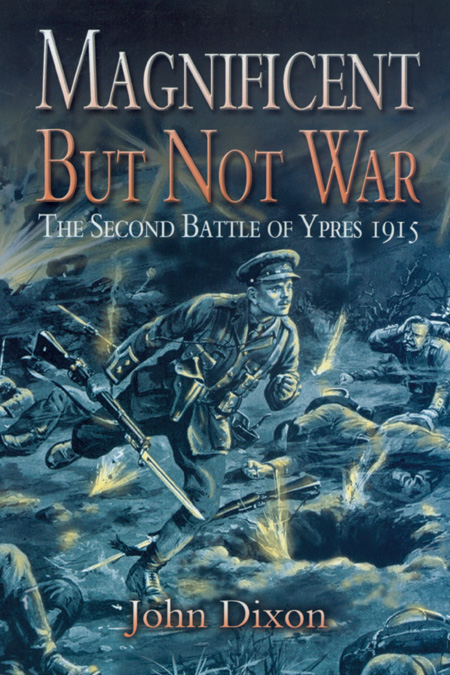 Magnificent But Not War: The Battle for Ypres, 1915, by John Dixon, Leo Cooper, Barnsley, S. Yorks., UK, 2003, 370 pp., illustrations, maps, notes, appendices, bibliography, index, $36.95 hardcover.
Magnificent But Not War: The Battle for Ypres, 1915, by John Dixon, Leo Cooper, Barnsley, S. Yorks., UK, 2003, 370 pp., illustrations, maps, notes, appendices, bibliography, index, $36.95 hardcover.
The Second Battle of Ypres, April 22-May 25, 1915, pitted the Germans against the British and the French in a fierce battle characterized by horror, surprise, indecision, and sacrifice. As the Allies coordinated plans to conduct an attack, their preparations were shattered by a tremendous cloud of chlorine gas, the first use of poison gas on the Western Front. Two German corps drove through terrorized French divisions and created a wide gap in the Allied lines. Inexplicably, the Germans failed to exploit their breakthrough. A series of dogged British counterattacks restored the situation, at a cost of almost 60,000 casualties. Based largely on British regimental war diaries, dispatches, and official histories, interspersed with anecdotal accounts, this fine book provides an interesting, detailed daily account and analysis of one of the Great War’s titanic battles.
Ready to Fire: Memoir of an American Artilleryman in the Korean War, by Richard B. Holmsten, McFarland, Jefferson, NC, 2003, 210 pp., illustrations, map, index, $29.95 softcover.
Richard B. Holmsten was a 26-year-old Army reservist called to active duty in September 1950 for service in Korea. This memoir is based on the many letters he sent home to his wife in Minnesota. It records his personal experiences training at Fort Lewis, Wash., voyage across the Pacific Ocean, and service in a field artillery unit in Korea from December 1950 to August 1951. The account contains considerable minutiae, reflecting the frequently boring and routine nature of soldiering, even in a combat theater. If one is still reading the book until the last chapter, one will be amazed to learn that, according to Holmsten, the Korean War ended in July 1951 (instead of 1953) and that “peace had come to Korea.” A merit of this book is the light it casts on the trials, tribulations, and confusion of an enlisted reservist plucked from civilian life and called to active duty during the Korean War.
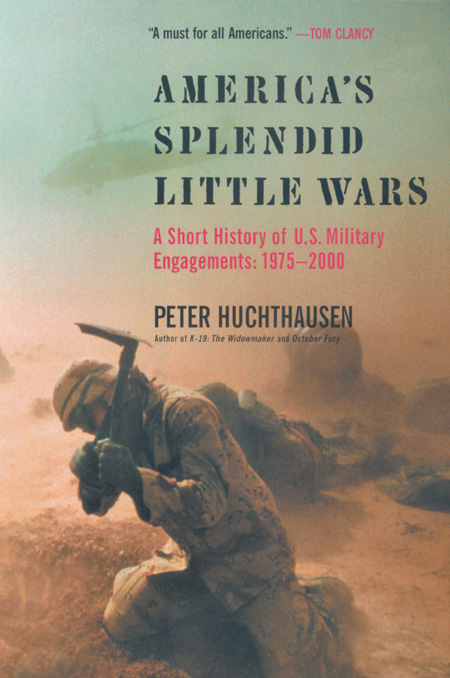 America’s Splendid Little Wars—A Short History of U.S. Military Engagements: 1975-2000, by Peter Huchthausen, Viking, New York, 2003, 304 pp., illustrations, maps, notes, bibliography, index, $29.95 hardcover.
America’s Splendid Little Wars—A Short History of U.S. Military Engagements: 1975-2000, by Peter Huchthausen, Viking, New York, 2003, 304 pp., illustrations, maps, notes, bibliography, index, $29.95 hardcover.
In this study, retired U.S. Navy officer and author Peter Huchthausen chronicles 15 U.S. military operations that took place in the quarter-century of “peace” following the end of the Vietnam War in 1973. He begins with the 1975 attempt to recover the hijacked merchant ship SS Mayaguez; covers operations in the Middle East, Caribbean, and Africa, and concludes with the 1999 air campaign over Kosovo. While these accounts are of some interest, they seem to be based on few references and little analysis. The book claims to be “an intimate history of each military engagement through eyewitness accounts, thorough research, and [the author’s] unique perspective as an intelligence expert.” In this era of “small wars,” expeditionary force operations, and conflict with nonstate entities, the conduct and lessons of these earlier engagements may be of value to the reader.
Storm on the Horizon: Khafji—The Battle That Changed the Course of the Gulf War, by David J. Morris, Free Press, New York, 2004, 318 pp., illustrations, maps, appendices, sources, notes, index, $25.00 hardcover.
On January 29, 1991, 27 days before the start of the Allied ground assault of Operation “Desert Storm,” the Iraqis invaded Saudi Arabia, seizing the coastal town of Khafji. A surprisingly fierce three-day engagement was fought, with Iraqi armored and mechanized divisions battling previously unblooded Saudi Arabian National Guard units. The decisive factor in the Allied victory, according to author David J. Morris, was employment of 1st Air-Naval Gunfire Liaison Company (ANGLICO) teams, which coordinated fire support. This included helicopters and fighter and bomber aircraft with precision weaponry that turned the tide of battle. Morris, a former Marine officer, demonstrates in this fine book a sound understanding of small unit tactics and of the human element of leadership. By combining research and scores of interviews with personal military experience, Morris has written a candid and compelling account of this “watershed” battle of the Persian Gulf War.
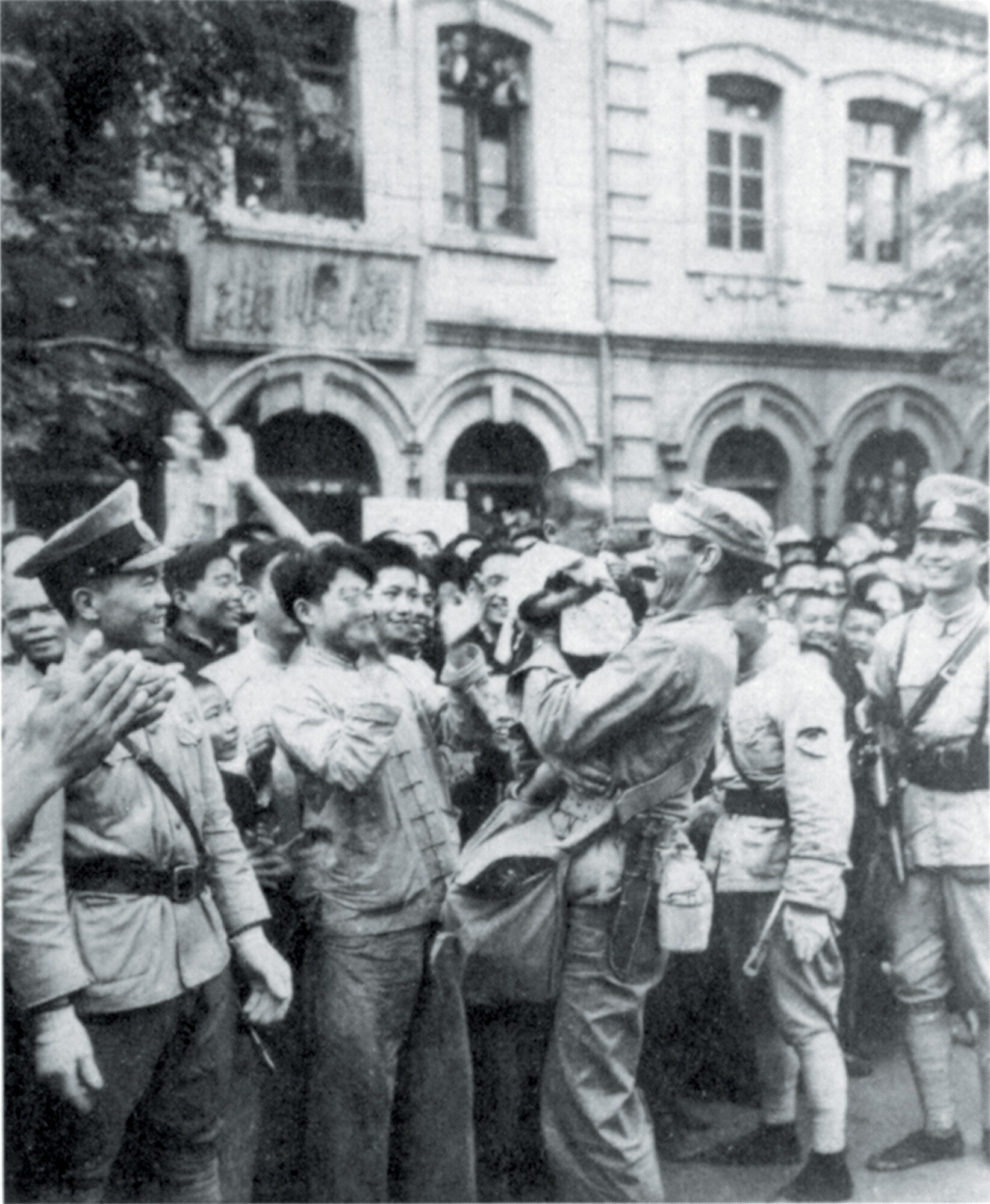
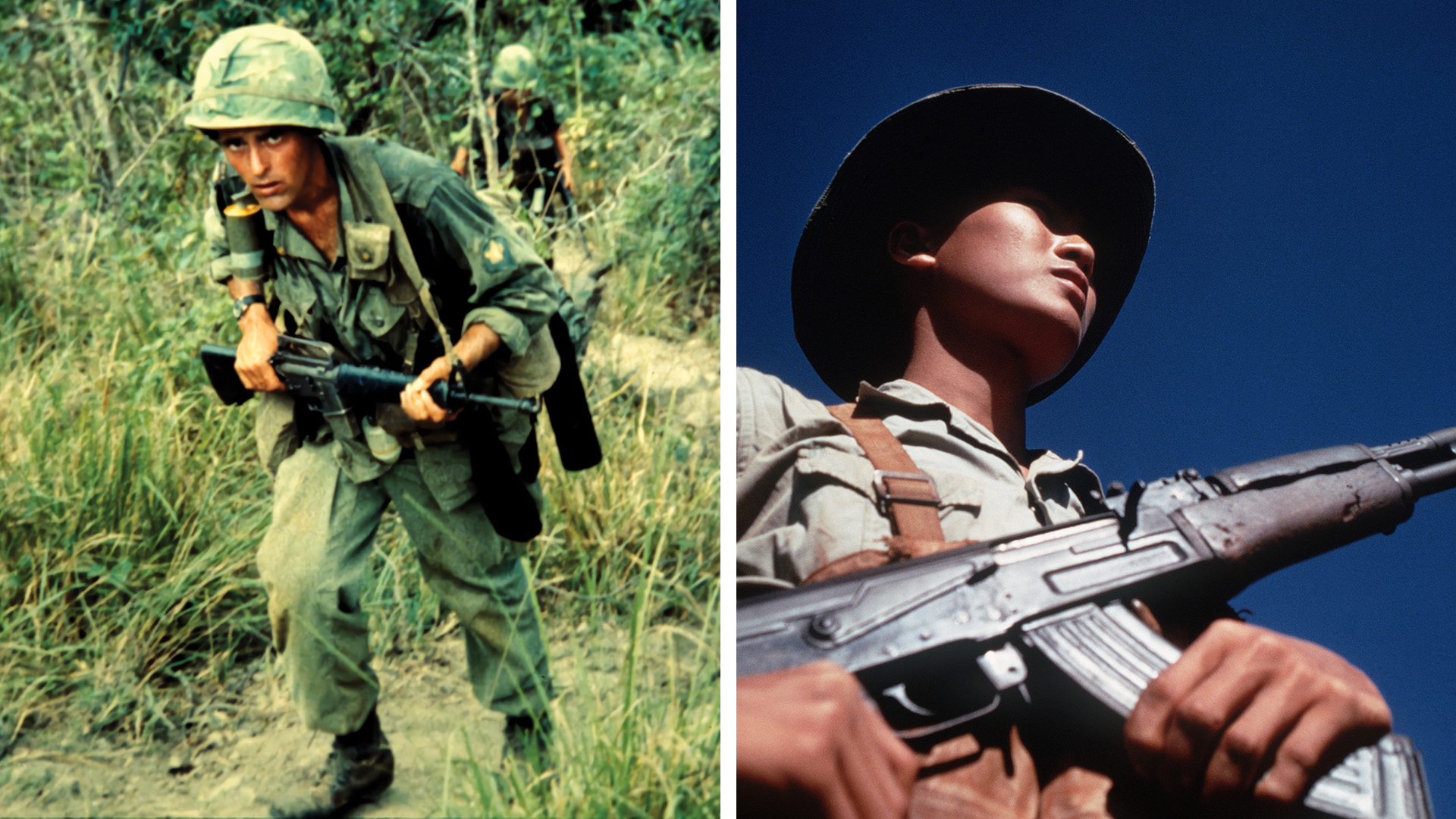

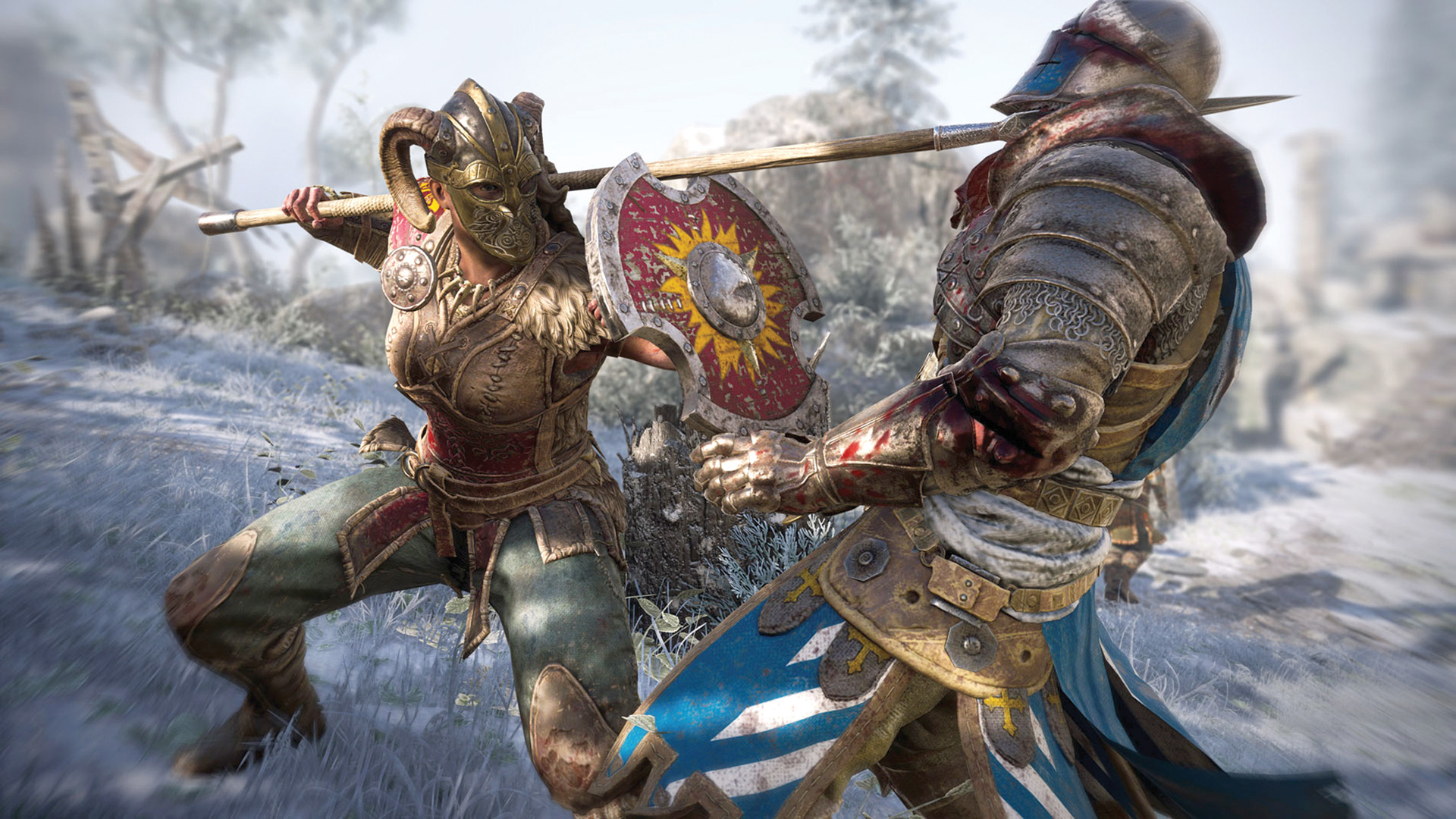
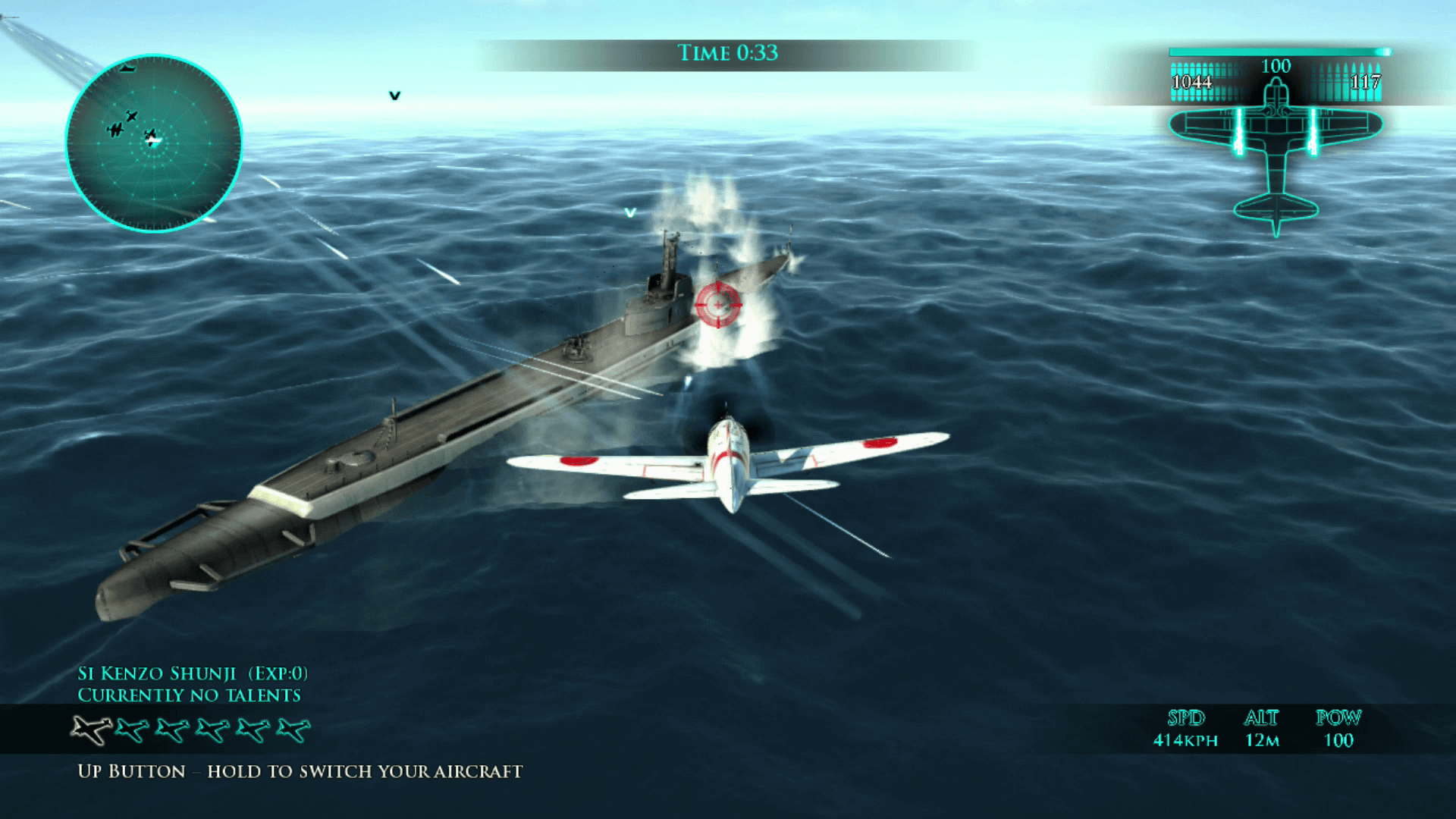
Join The Conversation
Comments
View All Comments